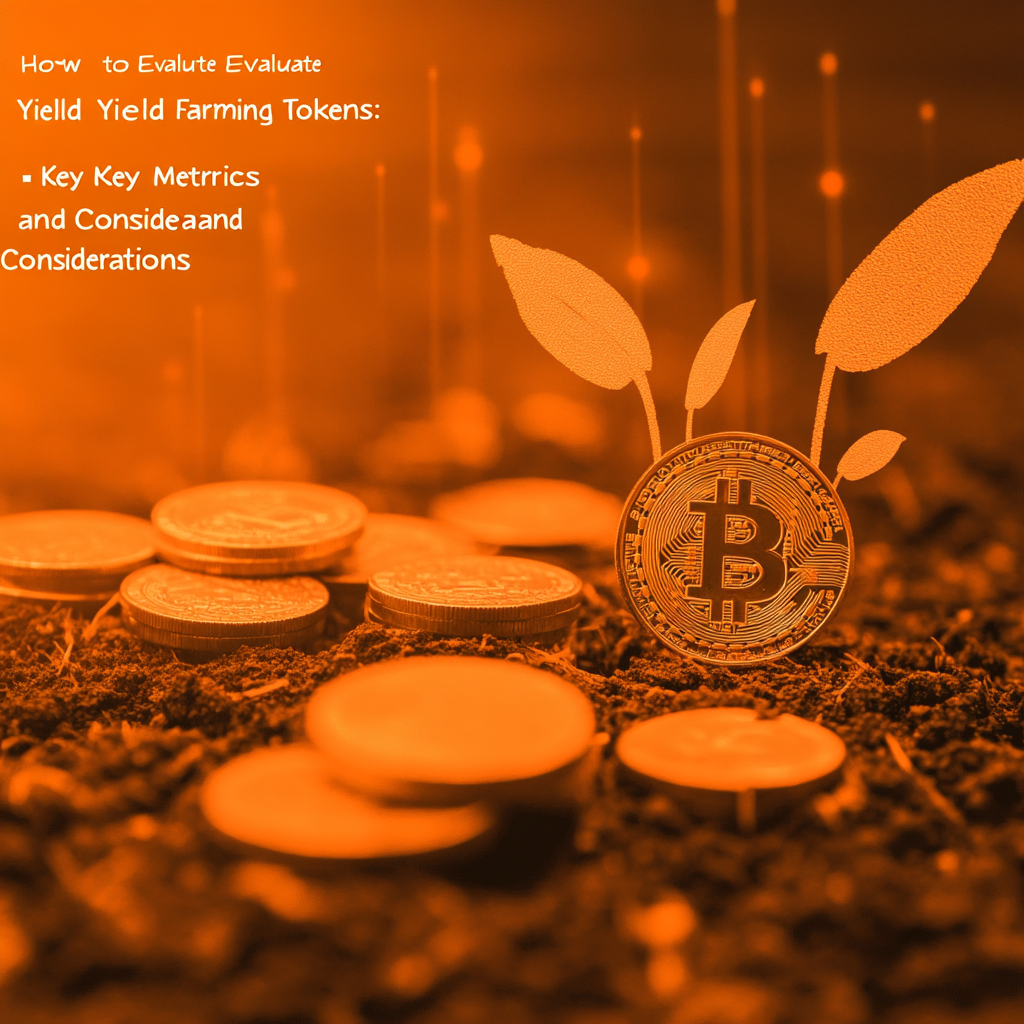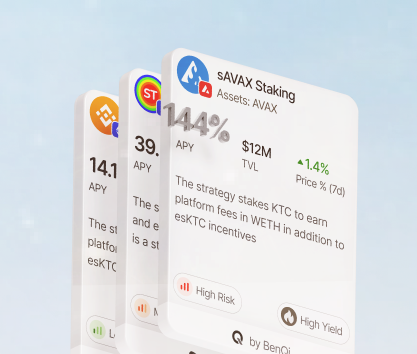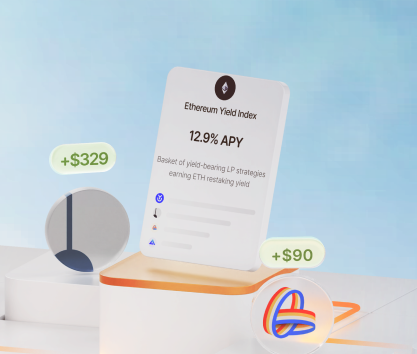The variety of investment options available to investors working in the DeFi sector is simply staggering. Making sense of the chaos created by several thousand protocols and over 14,000 tracked pools across 30 chains is quite challenging even for seasoned veterans who have seen it all. Nevertheless, it is necessary to learn how to navigate this complex ecosystem without losing one’s mind in the process.
Yield farming is a hugely popular part of the DeFi landscape. Investing in various pools to receive rewards in native or governance tokens (often, in layer 2 or even layer 1 coins) can be a lucrative endeavor if you know what you are doing. It seems like a straightforward thing: find a good protocol that pays good interest rates in native tokens and count your profits. However, the problem is that assets you receive as rewards can perform differently in your portfolio.
We will take a closer look at the yield farming sector, talk about the differences between tokens, and explain how one can evaluate their holdings accrued through this method of investment.
Key metrics for yield farming
A responsible investor doing their due diligence will try to estimate potential earnings and consider a variety of risks associated with investing in a particular asset. When it comes to the world of DeFi, the analytical work is simultaneously less and more complicated compared to TradFi. The main difference between digital and real assets is that the former is something purely speculative since there is no inherent value in any of the crypto coins.
Let’s compare available data for analysis that we will have by simply learning about an asset class. Below are three examples familiar to any investor:
- Real estate. If you plan to buy a commercial building, you can find information about tenants, occupations, rent forecasts, estimated market value, and more data on the business aspect of the investment. At the same time, other relevant metrics are also available and can be found easily. You can analyze the building and the quality of construction and take a look at the prospects for a lot of land. You can estimate returns on investments with a surprising degree of precision.
- Stocks. When you plan to buy shares of companies, you will have a lot of data to play with. Market performance is just the tip of the iceberg. Usually, the finances are open for scrutiny so you can look at EBIDTA, revenues, turnovers, and even have a deeper insight with some analytics that can be purchased from data brokers. To top it all off, you may look at real assets owned by the target corporation and consider the value of real estate, hardware, equipment, and human capital.
- Cryptocurrencies. The only viable information about digital assets is their performance in the market. Many protocols are created by anonymous or private organizations so you do not have any idea about the technological or business expertise of founders. On-chain analytics are often insufficient to gauge true user activity, adoption rates, and other important metrics. In many cases, the only thing you can work with is the data on the chain and price action history.
Digital assets are quite unpredictable and estimating potential profits can be challenging regardless of whether you have experience. On the other hand, it is possible to evaluate some yield farming tokens based on hard data. The analysis will be incomplete and notably inferior to something that you would produce when working with other asset classes, but it is still something to feed your brain with.
Key metrics for assessing yield farming investments
Yield farming is an investment technique where capital holders allocate tokens to pools and receive rewards from the protocol in native or governance tokens. In essence, investors stake one type of asset to get another. Since target tokens may have wildly different utility, estimated price, and other metrics, it is hugely important to scrutinize them even before you start assessing the quality of the pool.
Below are things to analyze in the first place:
- Price action. Even if you do not have any expertise in technical analysis, you should carefully examine the price chart and look at where the token is now compared to the launching date. Is it possible to find a good exit point for your investment plan? Does the price justify the risks you take? How does the historical performance look?
- Token supply. Inflation is the biggest enemy of an investor interested in yield farming. Many projects have an uncontrollable or unlimited supply of native tokens. Early investors simply flood the market when liquidating positions. This dramatically reduces the price and negatively affects trading volumes in the process.
- Tokenomics. Consider the way the initial supply is split among founders, developers, first buyers, and the market. If you see that founders and developers get a bigger cut, it may mean that you are looking at a degen farm. Also, many protocols may issue too many coins when launching sending the price to the bottom.
Tokenomics and reward mechanisms
Since the distribution of tokens and the way they enter the market matter so much, investors must prioritize obtaining this information. In the vast majority of cases, you will find it in the official documentation of the project. Note that many decentralized exchanges do not focus on tokenomics in their docs since there is no real distribution. All tokens simply go to investors and end up in the market. However, you should be aware of anti-inflationary mechanisms, if there are any, like burning and buybacks.
Reward mechanisms should be inspected too. Reward structures define how much you can earn during the investment period. Protocols have different ways of adjusting rewards depending on the situation in the DeFi sector, market circumstances, and other factors. In many cases, time also plays a huge role.
Here are things to consider:
- APY fluctuations are based on the market price of the native token. To convince investors that they will be rewarded handsomely for their contributions to pools, protocols may set up a system that automatically increases yields if the price of the native token starts falling to ensure that investors receive reasonable payouts. On the contrary, the interest rate may be reduced if the price of the token goes up.
- Mixed rewards structures. In many pools, investors receive several types of tokens. The ratio of rewards should be considered when deciding whether to invest in a pool. For instance, many pools on the Curve DEX platform offer rewards in CVR and CVX (Curve and Convex) meaning that you will be receiving both tokens in various ratios depending on the pool and its structure.
- Timing an exit. Investors are often unaware of periods during which they cannot use tokens acquired through yield farming. In some cases, you will have to wait for some time before selling rewards for profit. The delay causes all sorts of issues for those who want to estimate their potential earnings with at least some level of precision.
The importance of tokenomics and reward distribution
Crypto investors should always try to obtain as much information as possible to make informed investment decisions. Many protocols have all the necessary technical details fully disclosed on their websites where users can read about the parameters of pools, rewards, and token emission. However, going to GitHub to look into smart contracts directly can be a good idea for people with some coding experience. Additionally, we strongly recommend going to specialized forums like Reddit to learn more from power users.
Reward distribution is another critical factor for any investor who wants to estimate the potential profitability of investments in yield farming setups. However, it can be hard to get the right information by simply looking at pools and their statistics. Again, reading the official documentation carefully and talking to people with first-hand experience are good ways to inform yourself.
APY and TVL in yield farming
The vast majority of investors know what these abbreviations mean. However, up to 60% of all newcomers do not have any prior experience with cryptocurrencies or traditional financial markets. Eliminating these knowledge gaps is critical if you want to build a well-performing portfolio. When it comes to farming yields, knowing what different terms mean exactly is hugely important.
Let’s talk about some of the important metrics in the DeFi sector:
- Annual Percentage Yield (APY) is the interest rate that you will receive for investing with daily compounding that is already accounted for. APR is the interest rate without compounding. Many protocols and tracking platforms ignore the latter and simply give you the relevant APY rate since it is the one used by investors in the overwhelming majority of cases. Note that interest is accrued and collected in fixed periods. In some cases, you will get your rewards daily. In others, weekly, biweekly, or even monthly.
- TVL (Total Value Locked) is the amount of assets in a pool or all pools on the protocol. Usually, the value is denoted in US dollars but can also be shown in actual coins like USDT, DAI, ETH, BTC, etc. TVL is a good measure of reliability. Multimillion TVLs are usually achieved by massive protocols that have earned the trust of the audience. For instance, LIDO has a monstrous $23 billion TVL, and MakerDAO has over $2 billion. On the other hand, the APE-USDT pool on SushiSwap has just $10K in it meaning that no one really wants to invest in memecoins of that caliber.
- Liquidity pool size. If you want to invest in a liquidity pool, you should always look at its statistics before making a decision. Utilization, asset ratios, and other factors can tell you a lot about the potential of the pool to generate revenues and produce yields for investors. The size of the pool (TVL) is the first thing to look at. As mentioned previously, bigger pools tend to attract more investors and facilitate higher trading volumes.
Evaluating yield farming tokens
A big portion of analysis takes place way before you start choosing pools. It is important to look at the metrics of tokens and their behavior in the market. The first steps are all about learning how tokens perform and how many of them are out there. You can use a variety of sources to obtain the data. Coingecko and Coinmarketcap are platforms that aggregate information and provide all sorts of insights including on-chain data.
Let’s talk about some metrics that you can easily get from these sources and use to analyze tokens and their performances.
Evaluation of yield farming tokens
Whenever you search for a token, you will be served a large number of results leading you to market data aggregators. All of them provide multiple essential types of information:
- Market capitalization is the total value of all tokens calculated by multiplying the price of a single asset by the total circulating supply. The market cap serves as an indicator of the token’s popularity among investors.
- Daily trading volume is the value of assets exchanged within the last 24-hour period usually denoted in US dollars or any other currency chosen as the baseline by a user. This metric is crucial for investors as it shows the actual market liquidity of assets.
- Circulating and total supply. The former shows how many tokens are available for trading while the latter is the number of tokens that will be issued ever. Since the amount of assets flooding the market dictates inflation rates, you should always keep these metrics in mind.
- Price and its action. The former is self-explanatory. The latter means the historical change of the value represented by the price chart. Together with trading volumes, price action paints an illustrative picture of the asset’s performance and its current trends.
Let’s take Quickswap’s QUICK token as an example. The current market cap is $35 million with a massive $27 million daily trading volume and price action trending downward. The total circulating supply is 728.5 billion which is 72.8% of max supply. It means that there is still some room for inflation as the market will be continuously flooded by newly issued tokens. Price dynamics do not look particularly good but high trading volumes mean that investors can liquidate their positions rather quickly which is a massive advantage when it comes to yield farming.
In essence, you can look at these metrics like this:
- Higher supply counts and bigger rewards mean faster inflation that rapidly deteriorates prices if no anti-inflationary mechanisms are employed by the protocol. The price might recover when the maximum supply is reached and the market starts stabilizing.
- Liquidity is hugely important since it determines whether investors can time their exits properly and sell reward tokens. Trading volumes are good indicators but you should compare it to the market cap. $27 million is great for QUICK but will indicate very low interest for something like Arbitrum with a market cap of over $1.7 billion.
Risk factors and security considerations
The evaluation process should always account for risks. We won’t cover all possible dangers to your yield farming portfolio but several key factors deserve a special mention:
- Smart contract vulnerabilities. Since they are tiny programs designed to be lightweight and deterministic in nature, safety measures are often implemented poorly leading to massive losses in an event of a hacker attack. Invest in pools offered by protocols employing external audits and running bug bounty programs.
- Liquidation risk. Insufficient liquidity in a pool may lead to problems when trying to exit a market position. Make sure to work with protocols that have enough funds in their reserves to ensure a smooth investment experience.
- Impermanent loss occurs when the ratio of assets in the pool changes due to price fluctuations making your holdings cheaper compared to other assets in the pool. If the protocol employs automatic rebalancing, you will lose money on gas fees and may suffer permanent losses if you fail to time the exit correctly.
The main takeaway
Building an effective strategy using yield farming instruments can be a viable path to wealth. However, you should be using all sorts of techniques to evaluate rewards and estimate potential earnings. Comparing your realistic expectations to other methods of investment is the best way of determining whether to invest in a certain pool.









